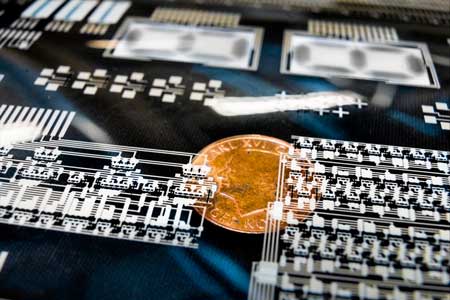Integrated Circuits: The Backbone of Modern Electronics
What are Integrated Circuits?
An integrated circuit (IC), also known as a microchip or chip, is a miniaturized electronic circuit consisting of transistors, resistors, capacitors, and other components fabricated onto a single piece of semiconducting material, typically silicon. ICs have revolutionized electronics by enabling the development of compact, high-performance, and low-cost devices that power our modern world.

Key Components of Integrated Circuits
Integrated circuits consist of several key components that work together to perform electronic functions:
- Transistors: Transistors are the building blocks of integrated circuits, acting as tiny switches that control the flow of electrical current. They can be used to amplify signals, perform logic operations, and store information.
- Resistors: Resistors are components that oppose the flow of electrical current, used to control voltage levels and limit current in specific parts of the circuit.
- Capacitors: Capacitors store electrical charge and can be used for filtering, timing, and decoupling functions in integrated circuits.
- Interconnects: Interconnects are the metal lines that connect the various components within an integrated circuit, allowing for the transfer of signals and power between different parts of the chip.
Fabrication of Integrated Circuits
The fabrication of integrated circuits involves a complex process called photolithography, which uses light to transfer intricate patterns onto a silicon wafer. The key steps in IC fabrication include:
- Wafer Preparation: A pure silicon wafer is cleaned and polished to create a smooth surface for the fabrication process.
- Photolithography: The wafer is coated with a light-sensitive material called photoresist. A patterned mask is placed over the wafer, and ultraviolet light is used to expose specific areas of the photoresist, hardening them.
- Etching: The exposed areas of the photoresist are removed, and the underlying silicon is etched away using chemicals or plasma, creating the desired pattern on the wafer.
- Doping: Impurities are introduced into specific regions of the silicon wafer to create n-type and p-type semiconductors, which form the basis for transistors and other components.
- Insulation and Metallization: Insulating layers, such as silicon dioxide, are deposited onto the wafer to isolate components. Metal layers are then deposited to create interconnects between the components.
- Packaging: The completed wafer is cut into individual chips, which are packaged into protective casings with connectors for integration into electronic devices.
Types of Integrated Circuits
Integrated circuits can be classified into several categories based on their complexity and functionality:
Analog ICs
Analog ICs process continuous signals, such as sound, temperature, or pressure. They are used in applications like amplifiers, sensors, and power management circuits.
Digital ICs
Digital ICs process discrete binary signals, representing information as 0s and 1s. They are used in logic gates, microprocessors, memory devices, and digital signal processors.
Mixed-signal ICs
Mixed-signal ICs combine both analog and digital functions on a single chip. They are used in applications that require the processing of both types of signals, such as data converters and communication systems.
Importance of Integrated Circuits
Integrated circuits have transformed the electronics industry and our daily lives by enabling the development of compact, high-performance, and affordable electronic devices. Some of the key benefits of ICs include:
- Miniaturization: ICs allow for the integration of thousands to billions of components onto a single chip, enabling the development of smaller, more portable electronic devices.
- Increased Performance: The close proximity of components within an IC reduces signal propagation delays and enables higher operating speeds compared to discrete components.
- Lower Power Consumption: The miniaturization of components and shorter signal paths in ICs result in lower power consumption, making devices more energy-efficient.
- Cost Reduction: Mass production of ICs using photolithography allows for the fabrication of millions of identical chips at a low cost per unit, making electronics more affordable and accessible.
Future of Integrated Circuits
As technology advances, integrated circuits continue to evolve, with ongoing research and development focused on:
- Scaling: The continuation of Moore's Law, which states that the number of transistors on a chip doubles approximately every two years, drives the development of smaller, more powerful ICs.
- New Materials: Researchers are exploring the use of novel materials, such as III-V semiconductors and 2D materials, to overcome the limitations of silicon and enable new functionalities in ICs.
- 3D Integration: Stacking multiple layers of ICs vertically, known as 3D integration or 3D packaging, allows for higher component density and improved performance.
- Neuromorphic Computing: The development of ICs that mimic the structure and function of biological neural networks, enabling more efficient and adaptive computing systems.
As integrated circuits continue to advance, they will undoubtedly shape the future of electronics, enabling new applications and innovations in fields such as artificial intelligence, quantum computing, and the Internet of Things.
Further Reading
National Science Review, Emerging materials and transistors for integrated circuits
Highlights in Science, Engineering and Technology, The History, Current Applications and Future of Integrated Circuit
